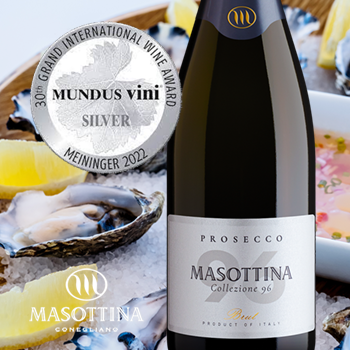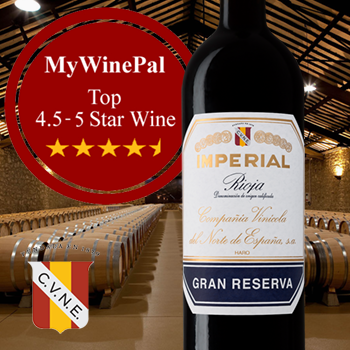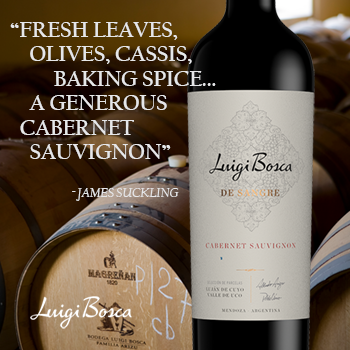
Welcome to Gérard Bertrand and the Gérard Bertrand Group who will be at the VanWineFest 2020. Read about their history and wines in their own words.
Introducing Gérard Bertrand
In 1975, Georges Bertrand introduced his son, Gérard, to harvesting on the Domaine de Villemajou in the unique terroir of Corbières. From his young age, Gérard Bertrand knew that he would be a winemaker
and would perpetuate the passion for wine as well as his father’s pioneer spirit. Gérard took over Domaine de Villemajou in 1987. In 1992, he created the wine company Gérard Bertrand which later buys Domaine de Cigalus, Château Laville Bertrou and Domaine de l’Aigle.
The 2002 acquisition of Château l’Hospitalet, however, allows Gérard Bertrand to acquire a new dimension: more than an exceptional domain overhanging of the sea, l’Hospitalet is a place entirely dedicated to the art of Mediterranean life.
Gérard Bertrand Group: Origin & Values
 The wines signed Gérard Bertrand have common features: they are wines of expression of the South of France, are balanced and elegant, and able to meet the different expectations of consumers. The Visigothic Cross, which dates back to the 7th century, is the emblem of Gérard Bertrand wines, and the doves represent sharing. This cross is the first version of what has become, centuries more later, the cross of Languedoc.
The wines signed Gérard Bertrand have common features: they are wines of expression of the South of France, are balanced and elegant, and able to meet the different expectations of consumers. The Visigothic Cross, which dates back to the 7th century, is the emblem of Gérard Bertrand wines, and the doves represent sharing. This cross is the first version of what has become, centuries more later, the cross of Languedoc.
Great Wines, Excellence & Naturalness
Gérard Bertrand created, in each of his domains, wines exceptional pieces from unique parcels chosen from the most beautiful terroirs of Languedoc. These parcels, selected for their ampelographic situation and exceptional climatic conditions, position themselves as great wines of the South of France, the quintessence of the Languedocian terroir.
Innovation is a keyword for the group Gérard Bertrand, today incarnated by several projects: the production of wines from quality, biological and / or sulphite-free, or from biodynamic agriculture, for all consumers.
Biodynamics: a Strong Commitment to Nature

Convinced early on that viticulture in harmony with nature is the best way to reveal the typicity of a terroir and to elaborate great wines, Gérard Bertrand started in 2002 on the path of biodynamics at Domaine de Cigalus, in Bizanet in Aude. A vineyard in excellent health, a preserved environment and magnified, balanced and vibrant wines of the intensity of their terroir demonstrate the relevance of the approach. Today, Domaine de Cigalus and Château la Sauvageonne are certified DEMETER, the reference organization for biodynamics. By 2023, all vineyard parcels will have completed their conversion to biodynamics. Gérard Bertrand and his teams are convinced that viticulture in harmony with nature is the best way to reveal the typicity of a terroir and to develop great wines.
The Wines We Will Feature at the International Festival Tasting Room
-

Gérard Bertrand Cote des Roses Rosé and Domaine de L’Aigle Chardonnay Cote des Roses Rosé, AOP Languedoc, 2018 – Côte des Roses celebrates the Mediterranean lifestyle. The Languedoc appellation stretches along the Mediterranean coast from the Spanish border as far as the city of Nîmes, along the foothills of the Montagne Noire and the Cévennes. The soils are highly varied, mainly with hard limestone and schist, but also gravel transported by the rivers of the Languedoc region. The warm, windy climate (“semi-arid Mediterranean climate with mild winters”) helps the grapes to ripen in good, healthy condition while retaining all their fresher qualities thanks to the altitude and the influence of the sea which eases the scorching summer heat. The bottle is original with its base in the shape of a rose, created by a young designer from the Ecole Boulle. This rosé wine is a blend of Grenache, Cinsault, and Syrah. The bouquet releases aromas of summer fruits, cassis and redcurrant. Floral notes of rose along with hints of grapefruit complete the picture. The finish is fresh, offering notes of candy. On the palate, the impression is fresh and full, with great aromatic persistence and balance.
- Domaine de L’Aigle Chardonnay, AOP Limoux, 2018 – The Domaine de l’Aigle is a 47-hectare estate magnificently located in the northernmost part of the Haute Vallée de l’Aude winemaking region, ranging between 250 and 500 metres above sea level. The wine has complex and subtle aromas: fruit (pineapple, peach, apricot, almond), toast and white flowers. Elegant and mineral in mouth, this wine is flavoured and has a subtly buttered texture, with a long finish.
- Grand Terroir Tautavel, AOP Côtes du Roussillon Villages Tautavel, 2016 – The Grand Terroir range gives wine-lovers the opportunity to discover the unique character of this region. Tautavel is a village in the Roussillon region, ideally located between the Pyrenees and the Mediterranean. Tautavel is steeped in history, recognized as one of the cradles of human civilization. The vineyards are planted on pebbly soils, on limestone-rich terraces and south-east facing hillsides. A blend of Syrah, Grenache, and Carignan. Intensely fruity on the nose, with red fruit and raspberry aromas underpinned by complex, spicy notes. A wonderful combination of supple tannins and delicate notes of scrubland and spices on the palate.
- Terroir St Chinian, AOP St Chinian, 2016 – Saint-Chinian is a highly reputed village in the Languedoc region where vines have been grown since the Middle Ages. Its vineyard, planted on the sun-kissed slopes of sandstone and schists, benefits from a cool micro-climate. The complex aromas of this wine shows black olives and blackberry come from the carefully controlled extraction performed during vinification. Its full, fat body on the palate lends it a remarkable elegance. Notes of roasted coffee, blackcurrant and prunes. The finish is long and mineral fresh.
- Chateau Villemajou Grand Vin Rouge, AOP Corbières-Boutenac, 2016 – Château de Villemajou Grand Vin is the fruit of the encounter between an exceptional terroir, Boutenac, original grape varieties, and the grower’s know-how. Situated inland in the Corbières appellation, this estate is unique for its very old Carignan vines, a Mediterranean variety that has been rehabilitated in order to produce great Languedoc wines. This wine is a blend of Carignan, Syrah, Mourvèdre, and Grenache. It has notes of toast, licorice and cloves. Powerful and elegant aromas of stewed fruit, sweet spices and roasted coffee. The wine is round in the mouth with mature tannins. It has a long-lasting, aromatic finish.













